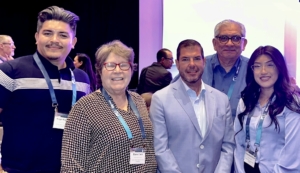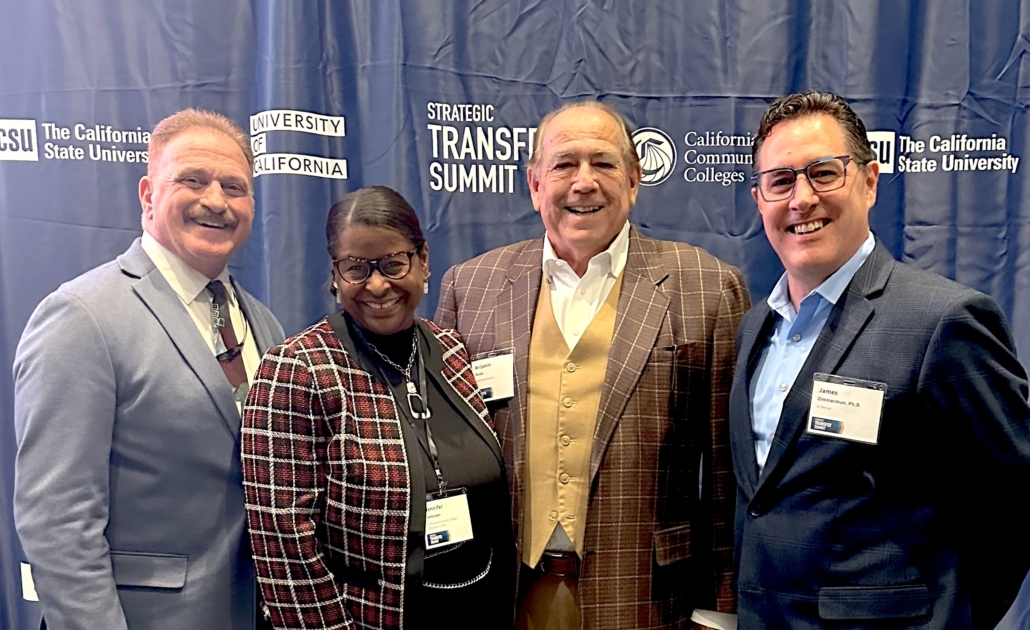Dr. Kristin Clark named to co-lead CVHEC dual enrollment strategies with Elaine Cash
Dr. Kristin Clark, chancellor-emeritus of West Hills Community College District (WHCCD), has joined the
Central Valley Higher Education Consortium core team as a consultant leading the development of a “Dual Enrollment Guide/Playbook of Best Practices” for Central Valley colleges, especially those serving students in rural areas.
 Dr. Benjamin Duran, CVHEC executive director, recently announced the appointment bringing the former chancellor out of retirement seven months after stepping away from her 30-year career in higher education that also included the presidency of West Hills College-Lemoore (now Lemoore College) and service on the CVHEC board of directors.
Dr. Benjamin Duran, CVHEC executive director, recently announced the appointment bringing the former chancellor out of retirement seven months after stepping away from her 30-year career in higher education that also included the presidency of West Hills College-Lemoore (now Lemoore College) and service on the CVHEC board of directors.
Dr. Clark will pair up with Elaine Cash, CVHEC grants coordinator and former superintendent of Riverdale Joint Unified School District who last month was named to co-lead CVHEC’s dual enrollment project.
“We are very fortunate that Dr. Clark was available and willing to join us for this very important project,” Duran said. “Her addition to the powerful CVHEC consulting team comprised of retired higher education and K12 leaders will be a benefit to the entire area.”
This week, Duran leads a CVHEC delegation to the 2025 California Dual Enrollment Equity Conference (Feb. 23-26) in Sacramento by the California Alliance of Dual Enrollment Partnerships, Career Ladders Project, and EdTrust–West.
CVHEC will present its Master’s Upskilling Project and Central Valley Math Bridge Project with College Bridge.
He said the Dual Enrollment Guide/Playbook is one of the priorities that has emerged from the Central Valley Dual Enrollment for Equity and Prosperity Task Force (CVDEEP) that CVHEC formed in 2019 with representation from the consortium’s 15 community college members in the valley’s 10-county region.
See the full story about Dr. Kristen’s new CVHEC venture in the upcoming March issue of the CVHEC newsletter.
Dr. Clark’s full bio
Elaine Cash bio
“Dual Enrollment in the Central Valley, Working Toward a Unified Approach for Equity and Prosperity.”
Executive Director Benjamín Durán (third from left) led the CVHEC delegation at the Strategic Transfer Summit with Transfer Project Lead Stan Carrizosa, Jennifer Johnson of California Community Colleges Foundation and Dr. James Zimmerman of UC Merced. (Photo below): The California Economic Summit in October was attended by Ángel Ramírez, Elaine Cash, Tom Uribes (back), Priscilla Arrellano posing with Assemblyman Joaquin Arambula.
Strategic Transfer Summit provides showcase for
CVHEC’s Transfer Project as reps make the rounds
Central Valley Higher Education Consortium delegations are making the rounds this fall at several state and national conferences including the recent Strategic Transfer Summit presented by the California Community Colleges Nov. 8 at UC Merced.
Other destinations include the Complete College America National Conference in Indianapolis Nov. 18-20; the American Mathematical Association of Two-Year Colleges (AMATYC) in Atlanta Nov. 14-17 through the Dana Center with CVHEC Math Task Force members Jeremy Brandl of Fresno City College and Shelley Getty of Taft College; and the Community Colleges League of California Nov. 22 in Sacramento.
 CVHEC also attended the California Economic Summit held Oct. 8-10 in Sacramento.
CVHEC also attended the California Economic Summit held Oct. 8-10 in Sacramento.
At the recent Transfer Summit, CVHEC’s Transfer Project team presented an update on its progress in partnering with the consortium’s 15 community college members using the Program Pathway Mapper software for a smoother transfer process for students. Leading the CVHEC delegation at the UC Merced event was Executive Director Benjamín Durán and Transfer Lead Stan Carrizosa along with James Zimmerman vice chancellor of UC Merced and Jennifer Johnson California Community Colleges Foundation.
Carrizosa said the summit, attended by the chief executive officers of the state’s three public higher ed segments – the University of California, the California State University and the California Community Colleges – provided a prime opportunity to showcase the consortium’s Transfer Project.
“The participation of the statewide CEOs of CCC, CSU & UC — coupled with powerful student testimony — makes this event an inflection point that sets our Transfer Project on its next upward trajectory,” Carrizosa said.
 CVHEC’s Transfer Project has been designated as a California Community Colleges Demonstration Project by Chancellor Sonya Christian to serve as a model systemwide.
CVHEC’s Transfer Project has been designated as a California Community Colleges Demonstration Project by Chancellor Sonya Christian to serve as a model systemwide.
This month, Duran will also attend the CLCC in Sacramento as well as lead the CVHC delegation to the CAC national conference in Indiana. Attending the CAC with him will be Angel Ramirez, operations/finance director; Elaine Cash, grants coordinator; and Tom Uribes, communications/media coordinator.
For the CA Economic Summit in October, Ramirez, Cash and Uribes were joined by Priscilla Arrellano, administrative specialist.
California’s San Joaquin Valley (SJV) has the lowest college enrollment and completion rates in the state, which both reflects and perpetuates the region’s economic challenges. Yet it could […]

